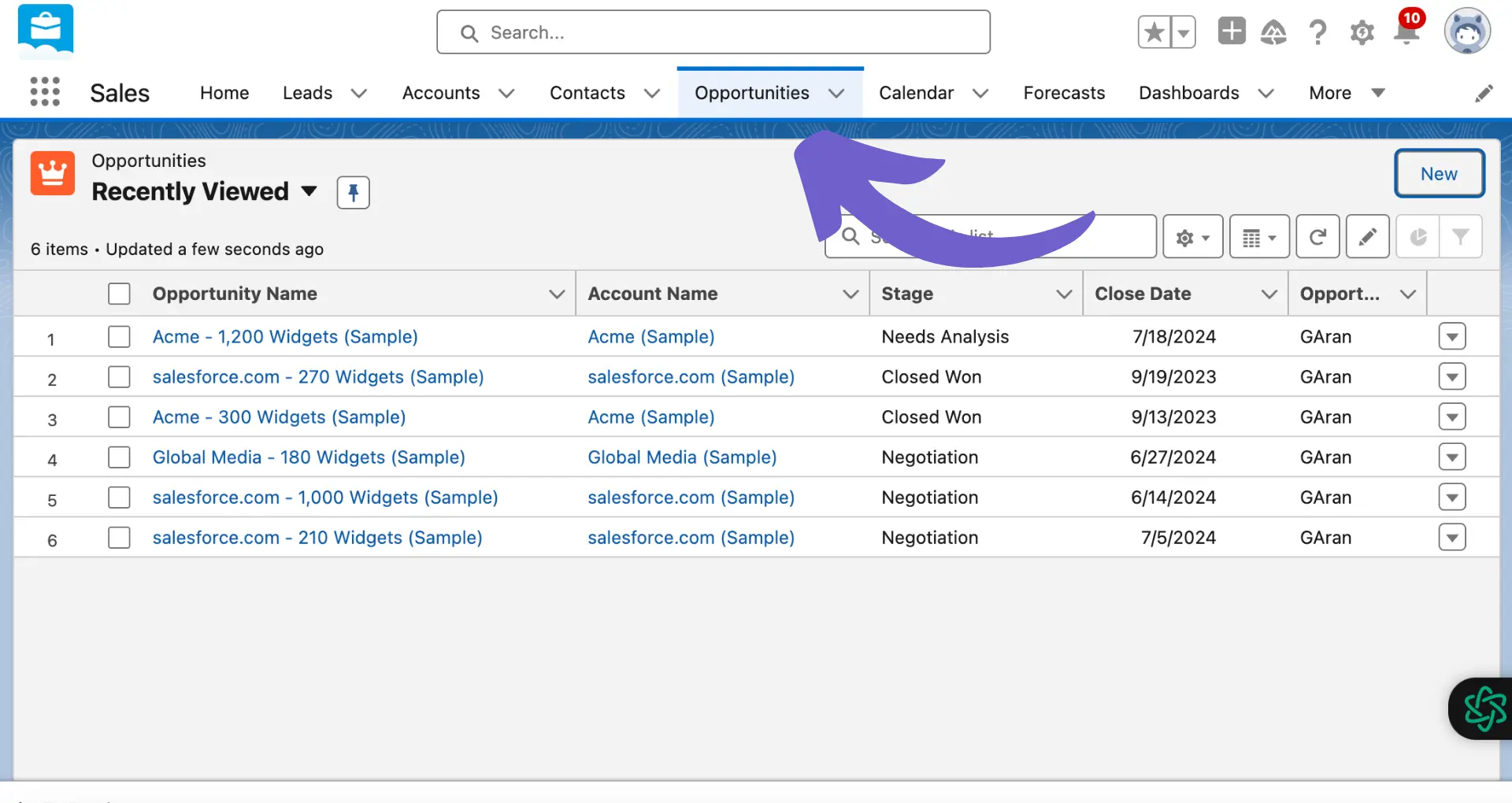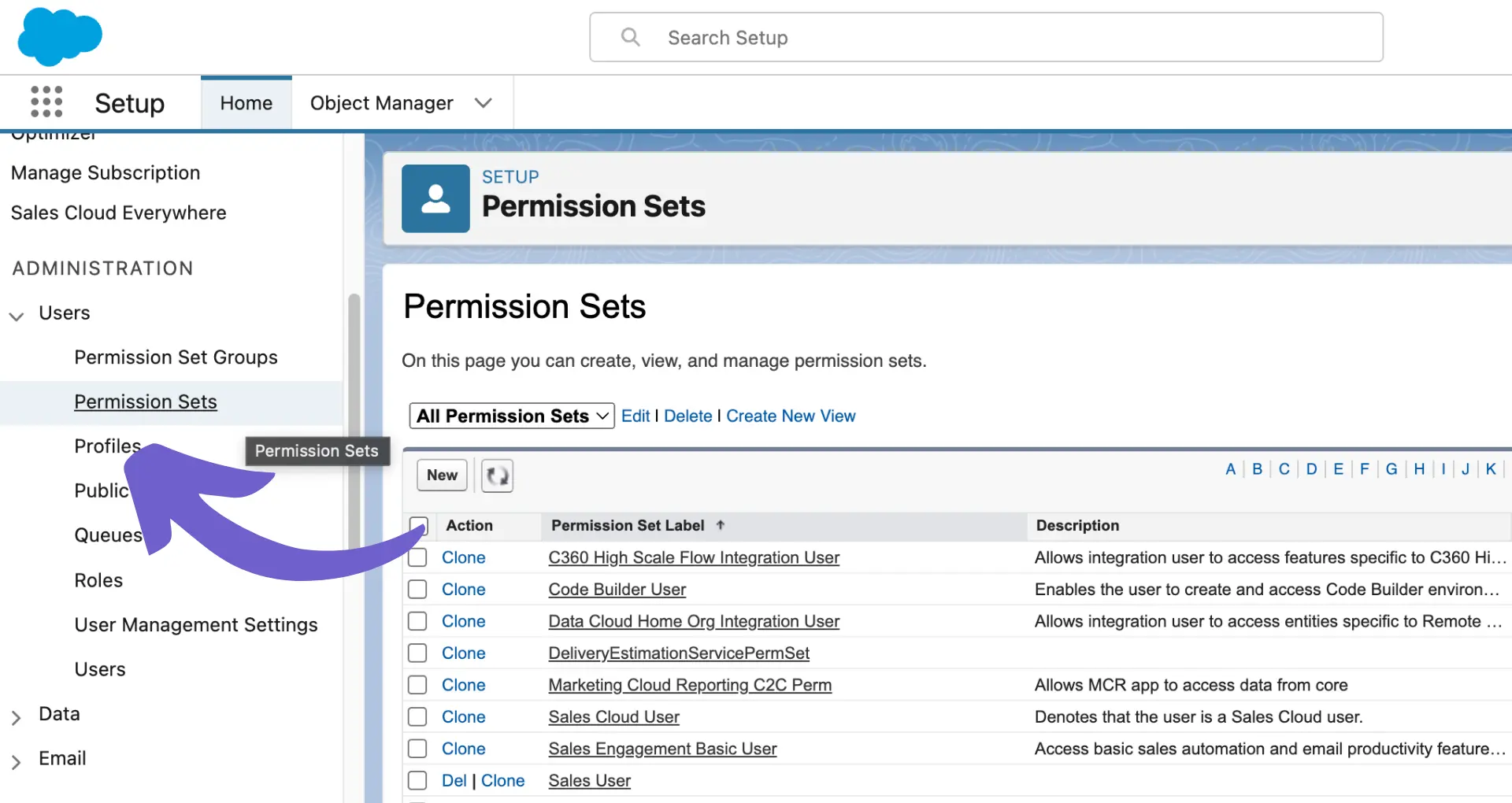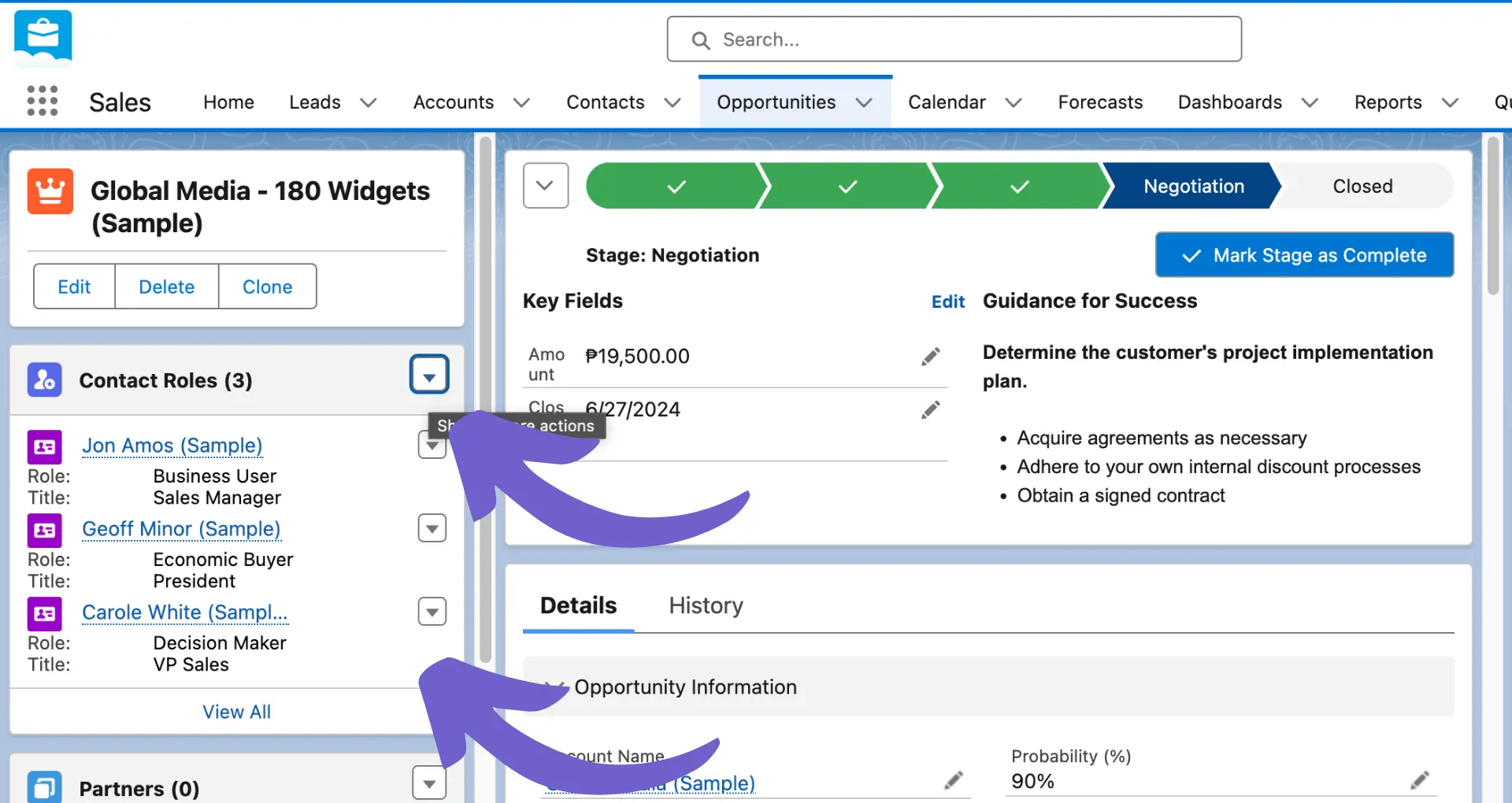To add team members, navigate to the Opportunity record, scroll to the Opportunity Team related list, and click 'Add'.
By the way, we're Bardeen, we build a free AI Agent for doing repetitive tasks.
If you're managing Salesforce, you might love Bardeen's AI automation tools. It helps with prospecting, lead generation, and email outreach. Use it to save time and focus on high-value tasks.
Adding team members to opportunities in Salesforce is a crucial task that requires a clear understanding of user permissions and roles. In this comprehensive guide, we'll explore who can add opportunity team members in Salesforce, delving into the necessary permissions and setup steps. We'll also discuss common challenges and best practices to ensure smooth management of your opportunity teams.

Understanding Opportunity Team Roles in Salesforce
In Salesforce, various roles interact with opportunity teams to manage and collaborate on sales deals. The two primary roles are:
- Opportunity Owner: The user who owns the opportunity record and has full access to manage the opportunity and its team members.
- System Administrator: Users with admin privileges who can configure permissions and settings related to opportunity teams.

These roles are assigned based on the user's responsibilities and level of access needed. By default, the Opportunity Owner has the ability to add, edit, and remove team members from their opportunities. System Administrators have the power to define and customize the permissions associated with each role, ensuring that users have the appropriate level of access to manage team memberships effectively.
Other roles, such as sales managers or team leaders, may also be granted permissions to manage opportunity team memberships based on the organization's structure and requirements. AI sales automation tools can help streamline these processes. It's essential to understand how these roles are assigned and what default permissions they have to ensure smooth collaboration and data security within Salesforce.
Setting Up Permissions to Add Team Members
To enable users to add or modify opportunity team members in Salesforce, you need to configure their permissions through profiles and permission sets. Profiles define a user's baseline access to objects, fields, and records, while permission sets grant additional permissions on top of their profile.
The key permission for managing opportunity team memberships is the "Edit" permission on the Opportunity object. Users with this permission can add, edit, and remove team members from opportunities they have access to. To grant this permission:
- Navigate to Setup > Users > Profiles or Permission Sets.
- Select the profile or create a new permission set for the users who need to manage team members.
- In the Object Settings section, find the Opportunity object and click on it.
- Under Object Permissions, check the box next to "Edit" to grant edit access to opportunities.
- Save the changes to the profile or permission set.

It's important to note that the "Edit" permission on opportunities is a prerequisite for managing team memberships. Without this permission, users will not be able to add or modify opportunity team members, even if they are the opportunity owner.

In addition to the "Edit" permission, you may also need to grant access to the Opportunity Team Member object itself through the profile or permission set. This ensures that users can view and interact with the team member related list on the opportunity record. To further streamline your process, consider automating sales prospecting tasks with tools like Bardeen.
Bardeen's sales prospecting automation can help you cut down on repetitive tasks, allowing you to focus on important activities to boost your workflow efficiency.
The Process of Adding Team Members to Opportunities
Adding team members to an opportunity in Salesforce is a straightforward process. Follow these steps to add team members:
- Navigate to the Opportunity record where you want to add team members.
- Scroll down to the Opportunity Team related list. If you don't see this related list, check with your Salesforce administrator to ensure it's included in your page layout.
- Click the "Add" button in the Opportunity Team related list.
- In the "Add Opportunity Team Members" dialog, search for and select the users you want to add to the team.
- Assign each team member a role, such as "Account Manager" or "Sales Representative," to define their responsibilities on the opportunity.
- Optionally, set the access level for each team member, such as "Read/Write" or "Read Only," to control their level of access to the opportunity record.
- Click "Submit" to add the selected users to the opportunity team.

It's important to note that the exact steps and options available when adding team members may vary depending on your organization's Salesforce configuration and customization. For example:
- Custom page layouts may position the Opportunity Team related list differently or rename it.
- Custom fields on the Opportunity Team Member object may require additional information when adding team members.
- Validation rules or triggers may enforce specific requirements or restrictions when adding team members, such as requiring certain roles or limiting the number of team members per opportunity.
If you encounter any issues or variations in the process of adding team members, consult your Salesforce administrator or refer to your organization's specific documentation and guidelines. For more details on automating sales prospecting, check our resources.
Common Challenges and Solutions in Team Member Addition
While adding team members to opportunities in Salesforce is generally a simple process, users may encounter some common challenges. Here are a few issues and their solutions:
- Permission Errors: If you receive an error message stating that you don't have the necessary permissions to add team members, contact your Salesforce administrator. They can grant you the required permissions through your user profile or permission sets.
- Access Level Issues: If you encounter an error message indicating that the team member's access level is greater than the organization's default opportunity access settings, your Salesforce administrator may need to adjust the sharing settings for opportunities or modify the team member's access level.
- Missing Opportunity Team Related List: If you don't see the Opportunity Team related list on the opportunity record, ask your Salesforce administrator to check if it has been added to the page layout for your user profile.
- Validation Rule or Trigger Restrictions: If your organization has implemented custom validation rules or triggers on the Opportunity or Opportunity Team Member objects, they may prevent you from adding team members under certain conditions. Consult your Salesforce administrator or developer to understand and address these restrictions.
To troubleshoot issues related to adding team members, consider the following steps:
- Double-check that you have the necessary permissions to add team members to opportunities.
- Ensure that the Opportunity Team related list is visible on the opportunity record page layout.
- Review any error messages carefully and consult your Salesforce administrator or the Salesforce Help documentation for specific guidance.
- Test adding team members to different opportunity records to determine if the issue is specific to a particular opportunity or is a general problem.
By using Bardeen’s automation tools, you can save time on repetitive tasks like qualifying leads, giving you more time to focus on high-impact work.
By understanding common challenges and following troubleshooting steps, you can overcome obstacles and efficiently manage opportunity team memberships in Salesforce.
Best Practices for Managing Opportunity Teams in Salesforce
To effectively manage opportunity teams in Salesforce, consider the following best practices:
- Regularly audit user permissions and roles: Ensure that team members have the appropriate access levels to opportunity records based on their roles and responsibilities. Conduct periodic audits to maintain data security and integrity.
- Establish clear guidelines for team member roles: Define and communicate the responsibilities and expectations for each opportunity team role. This clarity helps team members understand their contributions and collaborate more effectively.
- Encourage timely updates and communication: Emphasize the importance of keeping opportunity records up to date and sharing relevant information with team members. Utilize Chatter and comments to facilitate communication within the opportunity team.
- Leverage Salesforce reports and dashboards: Create reports and dashboards to monitor the performance and composition of opportunity teams. Analyze metrics such as win rates, average deal size, and team member participation to identify trends and areas for improvement.
- Provide training and support: Offer regular training sessions to ensure that team members are proficient in using Salesforce and understand the best practices for managing opportunity teams. Make resources, such as user guides or FAQs, readily available for reference.
By implementing these best practices, you can optimize the management of opportunity teams in Salesforce, leading to improved collaboration, data quality, and overall sales performance. Consider using automation tools for sales prospecting to further enhance your efforts.
Automate Salesforce Tasks Effortlessly with Bardeen
Understanding Salesforce permissions and who can add opportunity team members is essential for effective sales team collaboration. While the manual process involves specific user permissions, automating Salesforce processes can significantly enhance efficiency and data accuracy. Bardeen offers several playbooks that can automate and streamline your Salesforce operations, saving time and reducing manual errors.
- Create a new Salesforce opportunity: This playbook automates the creation of new opportunities within Salesforce, enabling sales teams to quickly capture potential sales without manual data entry.
- Create a Salesforce opportunity from the currently opened email: Automatically capture key information from emails and create Salesforce opportunities, leveraging AI to ensure accuracy and efficiency.
- Copy all Salesforce opportunities to Coda: For teams using Coda for project management, this playbook syncs Salesforce opportunities to Coda tables, ensuring seamless project tracking and sales management.
Embracing automation with Bardeen not only saves time but also ensures your sales processes are more streamlined and error-free. Start automating your Salesforce tasks today by downloading the Bardeen app.







.svg)
.svg)
.svg)
